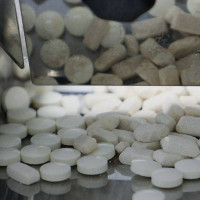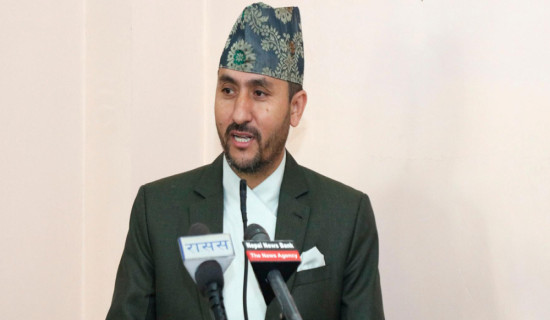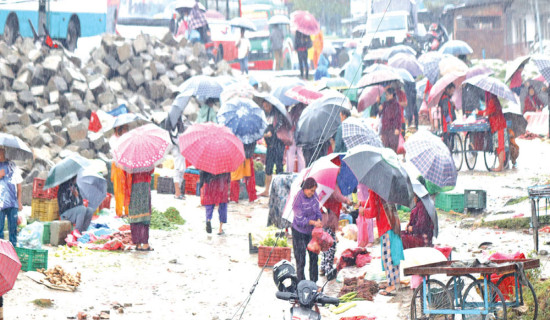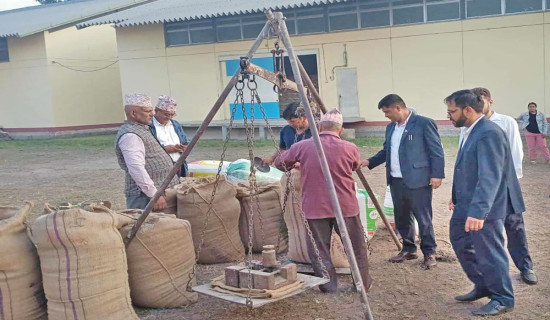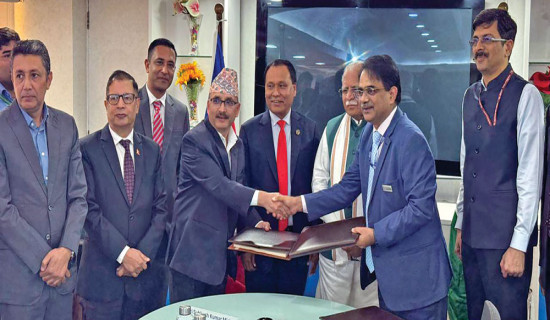- Sunday, 9 November 2025
NEA claims Rs. 5.26 billion loss
Kathmandu, May 3: Nepal Electricity Authority has issued a white paper showing its situation with financial status, demand and supply situations of electricity and further plans.
At a press conference organised to release the white paper on Friday, Managing Director Hitendra Dev Shakya said that the loss of Authority amounts Rs. 5.26 billion.
He said, "The white paper has been issued to make the authority's plans in the coming days and to evaluate the work to be done during my tenure." He said, "This was also necessary for the performance evaluation that was carried out as soon as I assumed the responsibility of the Managing Director."
Shakya was appointed MD of the state entity on March 24 by sacking Kul Man Ghising. The total cumulative profit till the fiscal year 2023/24 was claimed to be around Rs. 46.47 billion, the profit by mid-March 2025 of the current fiscal year has been recorded at Rs. 9.48 billion, he said.
However, when calculating the profit and loss including the claim for accelerated depreciation as per the provisions of the Income Tax Act, it appears that the total loss so far has been Rs. 5.26 billion.
NEA to take short-term loan of up to Rs. 10 billion for operation
MD Shakya said that a process of taking a short-term loan of Rs. 10 billion has been taken forward as the balance in the NEA's account is quite insufficient.
"While we are currently showing assets of Rs. 644 billion and also showing profit, the NEA does not have sufficient cash balance," Shakya said, 'That is why we have taken forward the process of taking a short-term loan of Rs. 10 billion for the payment of dues."
The NEA has to pay Rs. 32.5 billion, including Rs. 29.5 billion as interest of loan to the government of Nepal and Rs. 3 billion for electricity of Tanakpur. He said that although the projected revenue source of the Authority for the fiscal year 2024/25 is Rs. 199.02 billion, the approved budget expenditure for 2024/25 is Rs. 228.77 billion.
‘Out of the said budget deficit of Rs. 29.75 billion, Rs. 14.65 billion was to be reimbursed from the government of Nepal for previous years, Rs. 8.26 billion was to be received from the recovery of arrears of dedicated feeders and trunk lines, and the remaining Rs. 10 billion was to be met by issuing bonds,’ he said. He also said that the projected revenue seems to have overestimated the electricity sales. Shakya said that due to the damage caused to various production centers by the floods in September last year, exports as well as domestic sale have decreased, so actual sales are expected to amount only around Rs. 18 billion or even lower than that.
He said that despite the uncertainty of the proposed cash flow in the approved budget, the current cash crisis has arisen because construction works were in progress, exceeding the existing resources.
Electricity imports cannot be reduced to zero a few years
Shakya has claimed that 97.5 per cent of municipalities have access to electricity.
He said that 95 per cent of the electricity has been accessed in terms of ward. The NEA has said that access has reached 91.4 per cent based on housing structure. Similarly, the access to electricity in terms of family numbers reached 84.62 per cent.
The domestic demand as of mid-March is 2,337 MW. The NEA has projected that the domestic demand will reach 2,438 MW by the end of the current fiscal year.
He said that the imbalance between demand and supply has resulted in the wastage of electricity during the rainy season while demand for electricity increases in the dry season, and that it has not been able to fully meet the demands.
“Its management looks even more challenging in the coming days. According to the NEA’s projection, there will be a surplus of 2,648 MW of electricity in the rainy season in 2025/26 and 3,316 MW in 2026/27. It seems that this should be exported," he said.
However, at the same time, it seems that 791 MW will have to be imported in the dry season of 2025/26 and 728 MW in 2026/27, he said. Shakya said that electricity imports will not be zero in the coming days. He said that if we move forward at the current situation, it will not be possible to eliminate imports for a few more years, he claimed.
According to him, for a sustainable solution and energy security, energy should be stored by constructing semi-reservoirs, reservoirs, pumped-storage projects and battery energy storage systems.
Along with this, he said that all efforts should be made to increase the annual growth rate of electricity consumption from the current 12-14 per cent to 20 per cent. Likewise, the NEA has said that around Rs. 122 billion is required to complete its under-construction projects.
The budget will be spent to complete the under-construction transmission and distribution infrastructure of the NEA, said Shakya.




